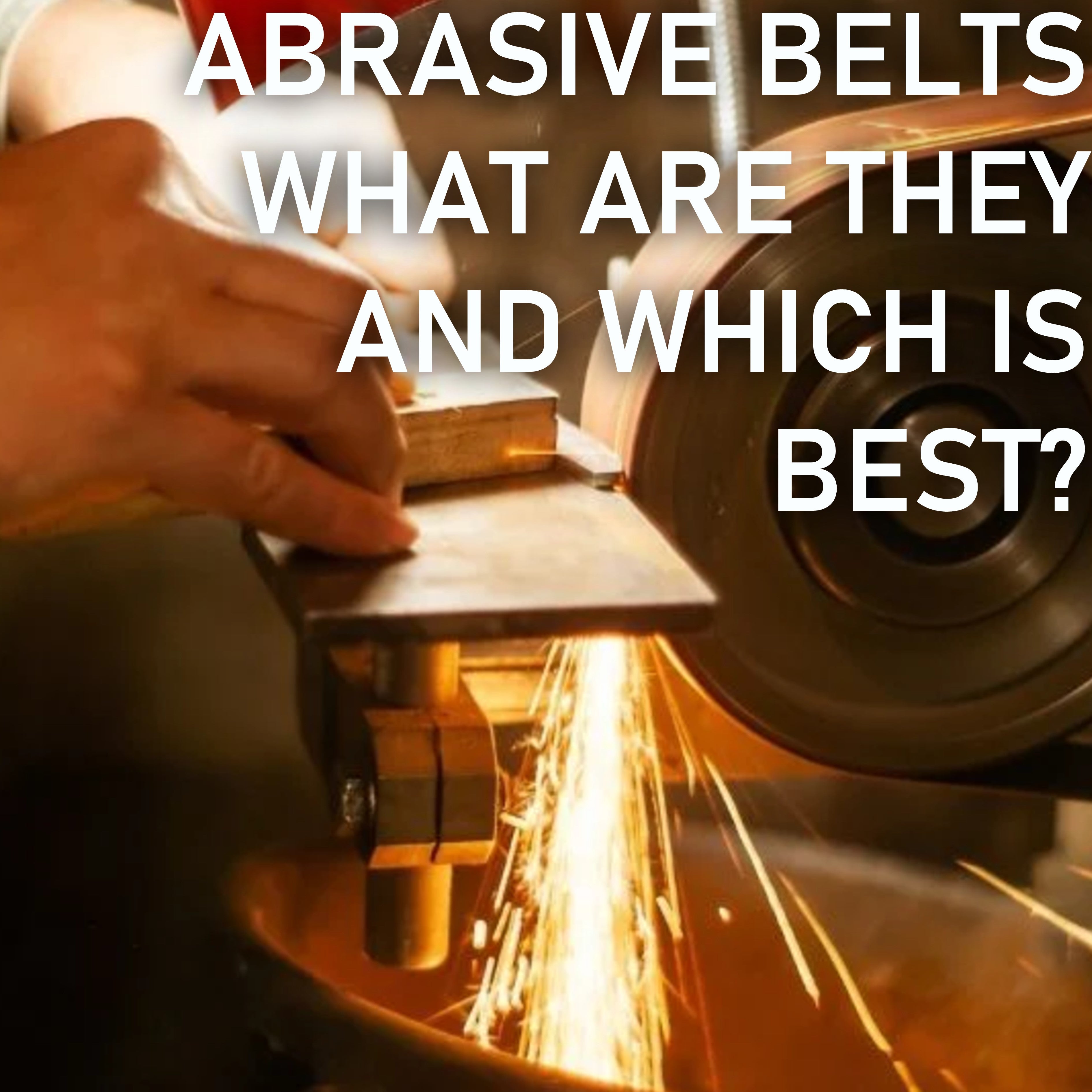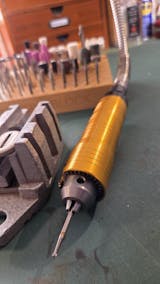Abrasive belts, what are they and which is the best?
Abrasive belts are a type of coated abrasive that are used for grinding, sanding, and polishing. They consist of a backing material, such as paper or fabric, that is coated with abrasive grains. The grains are typically made of aluminium oxide, silicon carbide Zirconia or Ceramic. Abrasive belts are available in a wide range of grit sizes and can be used on a variety of materials, including metal, wood, and plastic and more.
There are several different types of abrasive belts, we currently stock Ceramic belts, Aluminium oxide belts, and conglomerate or "Pearl" abrasive belts. Each type has its own set of advantages and disadvantages.
Ceramic belts are made of a type of abrasive grain called ceramic. They are known for their high cutting speed and long lifespan, making them a popular choice for heavy duty grinding on steel. They are also more heat resistant than other types of abrasive belts, making them suitable for use on materials that generate a lot of heat during grinding, such as stainless steel and titanium. These belts are best used at high speed.
However, ceramic belts can be more expensive than other types of abrasive belts due to the way the grain is made they often prefer high pressure grinding to get the full potential. They may also wear down faster when used on softer materials, such as aluminium, brass, woods or plastics. So we recommend only using these belts on steel and other hard metals and using other belts for the rest of your grinding and sanding needs.
Aluminium oxide belts are made from aluminium oxide grains. They are a popular choice for general purpose grinding and sanding applications and are known for their durability and versatility. They can be used on a wide range of materials, including soft metals, woods, and plastics, and are available in a range of grit sizes to suit different applications. These belts are best used at medium to high speed.
However, aluminium oxide belts may not be as effective at cutting hard materials like steel as ceramic belts. This is due to the grains being softer compared to ceramics and such will wear down faster and not cut as long in comparison. However, if used on soft materials will cut far longer. We recommend using these belts on brass, wood and other softer materials.
Conglomerate or "Pearl" abrasive belts are made of a mixture of abrasive grains, usually aluminium oxide. They are known for their long lasting grinding ability and excellent surface finish on steel and other metals. These belts are made by having small clumps or “Conglomerates” of the grain chosen stuck together. This means that the grain is evenly spread across the belt and worn down at a more even rate leading to their longer life and better surface finish. These belts are best used at medium to high speed.
However, conglomerate abrasive belts do not remove material like the other types of abrasive belts and are more suited for surface finishing. They may be more prone to clogging when used on softer materials but can be touched up with a wire brush.
In conclusion, each type of abrasive belt has its own set of advantages and disadvantages, and the best choice will depend on the specific needs of the application. Ceramic belts are best for heavy duty grinding and sanding, Aluminium oxide belts are a good choice for general purpose grinding and sanding, and conglomerate or "Pearl" abrasive belts are good for surface finishing steel. It is important to choose the right type of abrasive belt for the job to ensure the best results and maximum efficiency.
If you have any questions about abrasives please feel free to contact me and ill happily talk to you about steel and what you need, my email is tim@ausmakersupplies.com.au



















